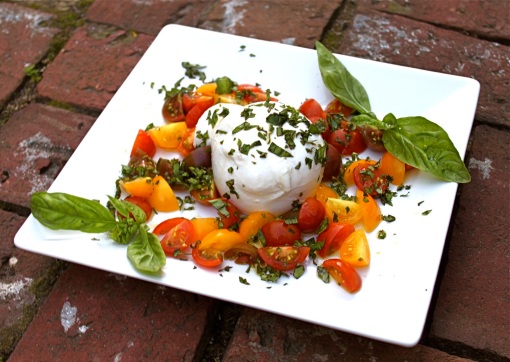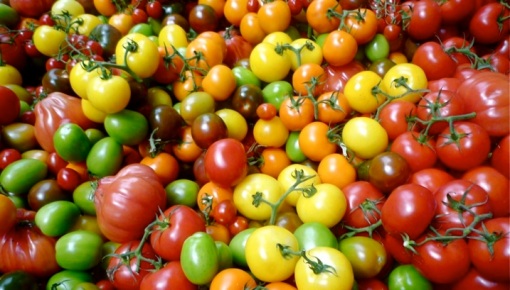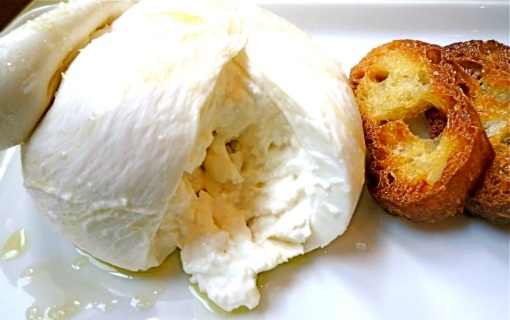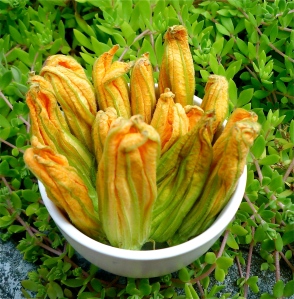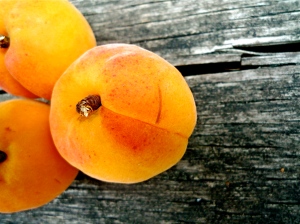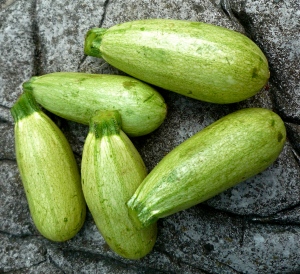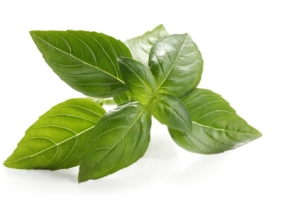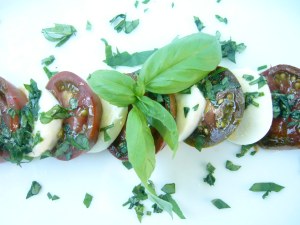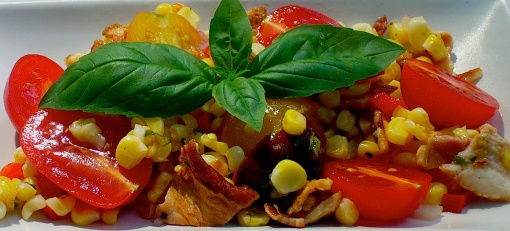With summer produce at its best right now, we can rely on top quality ingredients to keep cooking simple. One classic summer dish that couldn’t be easier is Insalata Caprese – a salad made with fresh mozzarella, tomatoes, fresh basil, olive oil and sea salt. For an interesting twist on a standard caprese salad, why not try it with burrata instead?
Burrata is a type of fresh mozzarella cheese from Puglia in southern Italy. Each baseball-sized round of burrata is stuffed with mozzarella curds and cream, which spill out once it has been cut. Each ball has a ‘knot’ on top where the cheese was sealed, keeping the cream inside. It is often packaged in a damp wrapping or suspended in liquid to protect it. Burrata is extremely delicate and should be consumed within a few days of production.
Until recently, burrata had to be imported from Italy to North America, however, there are a number of producers now making it in Canada and the United States. In Toronto, I usually buy burrata produced by Quality Cheese or Santa Lucia. It’s usually available at specialty cheese shops including Olympic Cheese, Scheffler’s Deli and the Cheese Boutique. In other areas, a google search should indicate where you can find it (unfortunately it may be difficult to locate outside of urban areas but ask at your local market – they may be able to order it for you).
The key to serving burrata is to keep it simple. A simple drizzle with olive oil and a dash of sea salt will suffice but I like to showcase peak season tomatoes and basil to take it to the next level. Prepare some Olive Oil and Sea Salt Crisps to spread it on (see recipe below). Use good quality olive oil, sea salt and the best quality fresh tomatoes and basil you can find. Be sure to bring the burrata to room temperature for a half hour or so before serving. This dish only takes minutes to put together and will be sure to impress your guests as an appetizer or starter dish.
Burrata with Tomato and Basil
- 1-1/2 to 2 cups good quality tomatoes (any kind will do as long as they are ripe and sweet – heirloom varieties come in many colours and are visually appealing)
- 4 to 5 large fresh basil leaves, plus extra sprigs for garnish
- Good quality extra virgin olive oil
- A pinch or two of sea salt
- Olive Oil and Sea Salt Crisps (below)
- Remove burrata from its packaging and use a clean towel or paper towel to dry it. Set it on a serving platter and let it come to room temperature for at least a half hour before serving.
- Chop the tomatoes and basil (to chop basil, see my tip on How to Chop Fresh Herbs)
- Place the tomatoes around the burrata and sprinkle with chopped basil. Drizzle a small amount of olive oil over the cheese and tomatoes and season with a pinch or two of sea salt.
- Use a knife and spoon to serve on crisps.
Olive Oil and Sea Salt Crisps
Tip: These crisps can be made in advance and stored in an airtight container for a couple of days. However, if you don’t have time to make them, Ace Bakery sells a similar product that works well. You can also serve the burrata with toasted baguette slices or even crackers.
- 1 baguette
- 1/4 to 1/2 cup (approximately) extra-virgin olive oil
- Sea salt
- 1 clove fresh garlic (optional)
- Preheat the oven to 375 degrees Fahrenheit.
- Slice a baguette into rounds about 1/2“ thick. Brush both sides of each slice with olive oil and lay in a single layer on a baking sheet.
- Bake for 9 to 10 minutes or until the bottoms are golden brown and toasted. Turn crisps over and bake for another 3 to 5 minutes.
- Remove from the oven and sprinkle with sea salt. Crisps can be kept in an airtight container for a few days.
- To make garlic crisps: Peel a clove of garlic and rub it onto each crisp.
